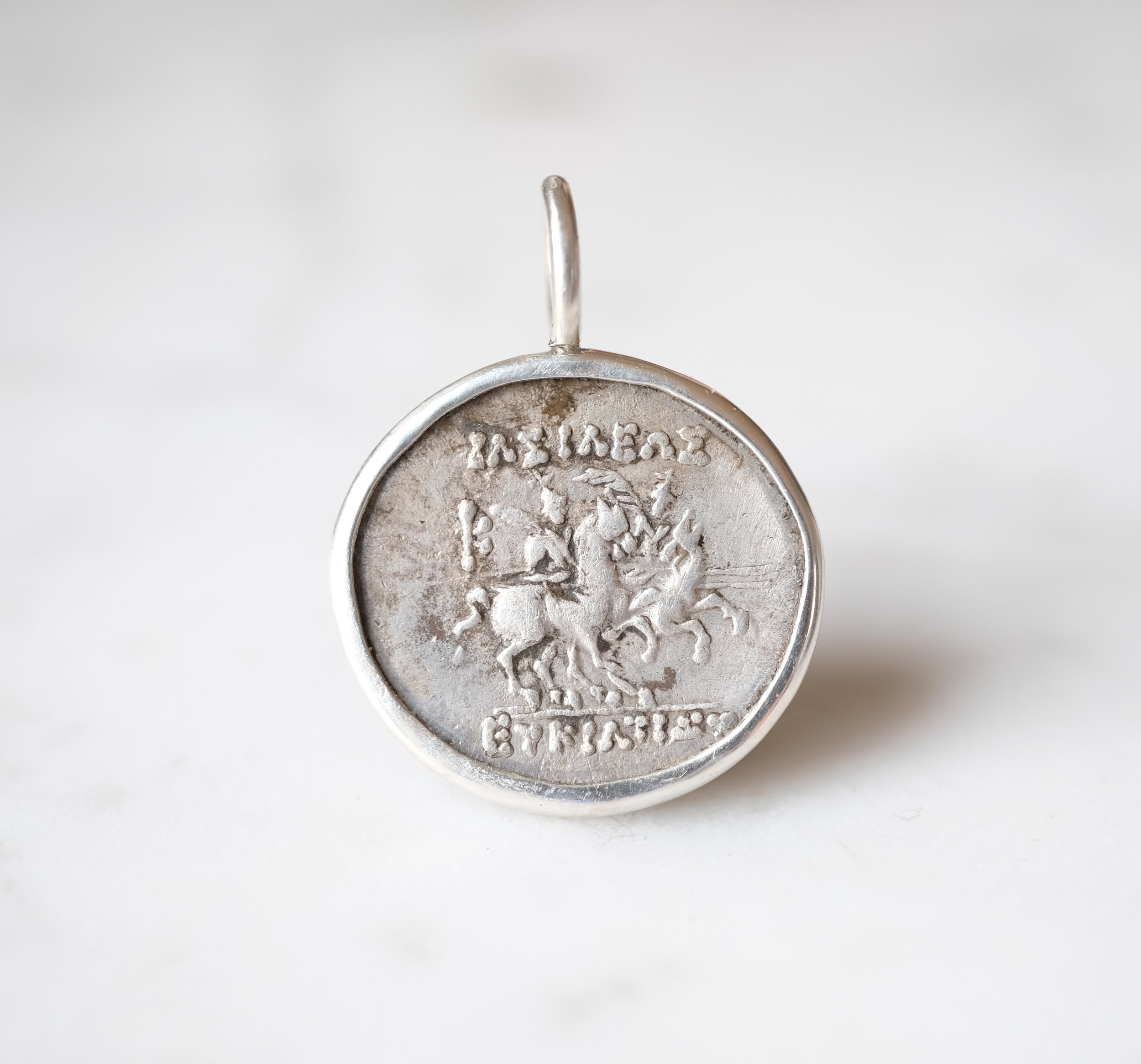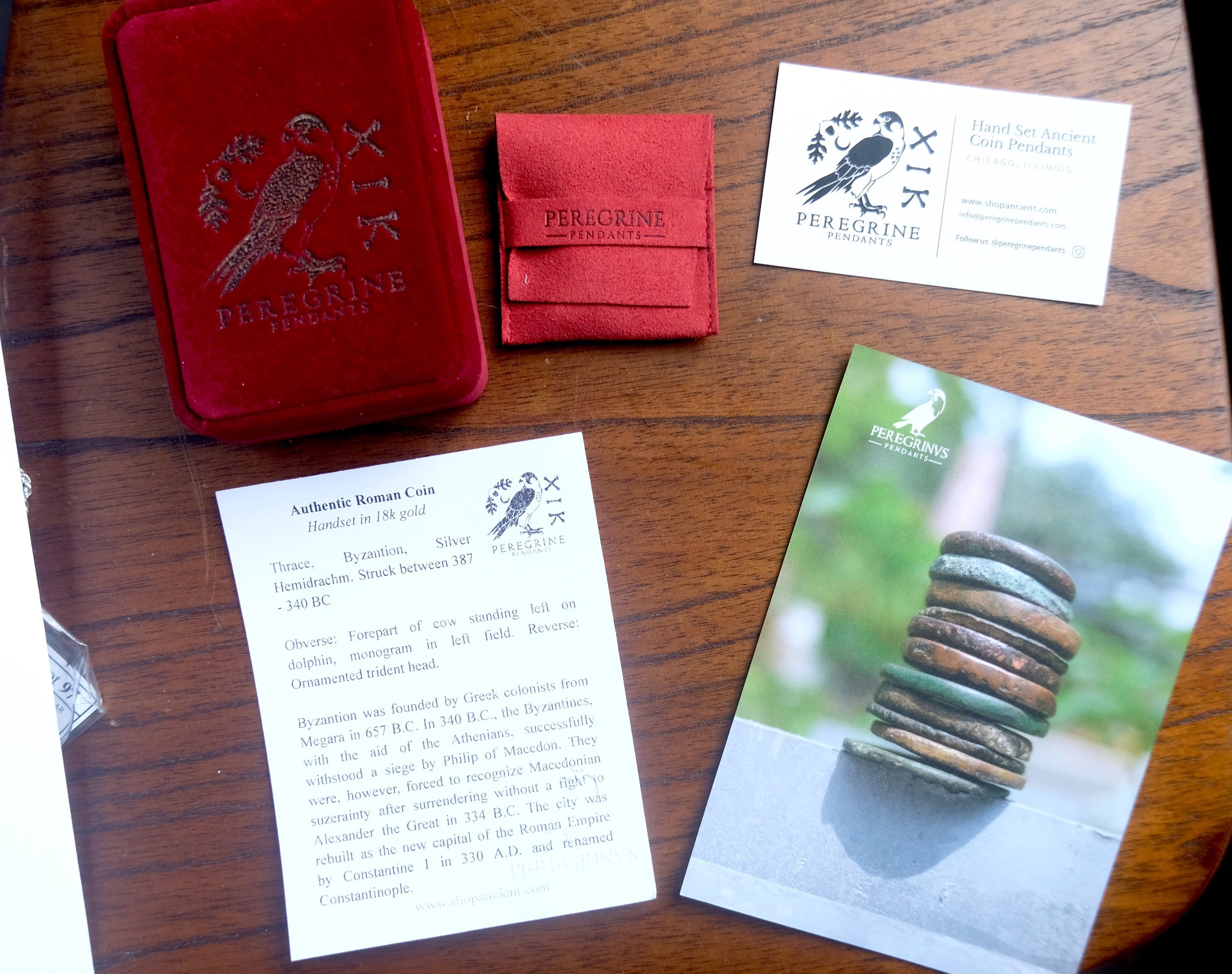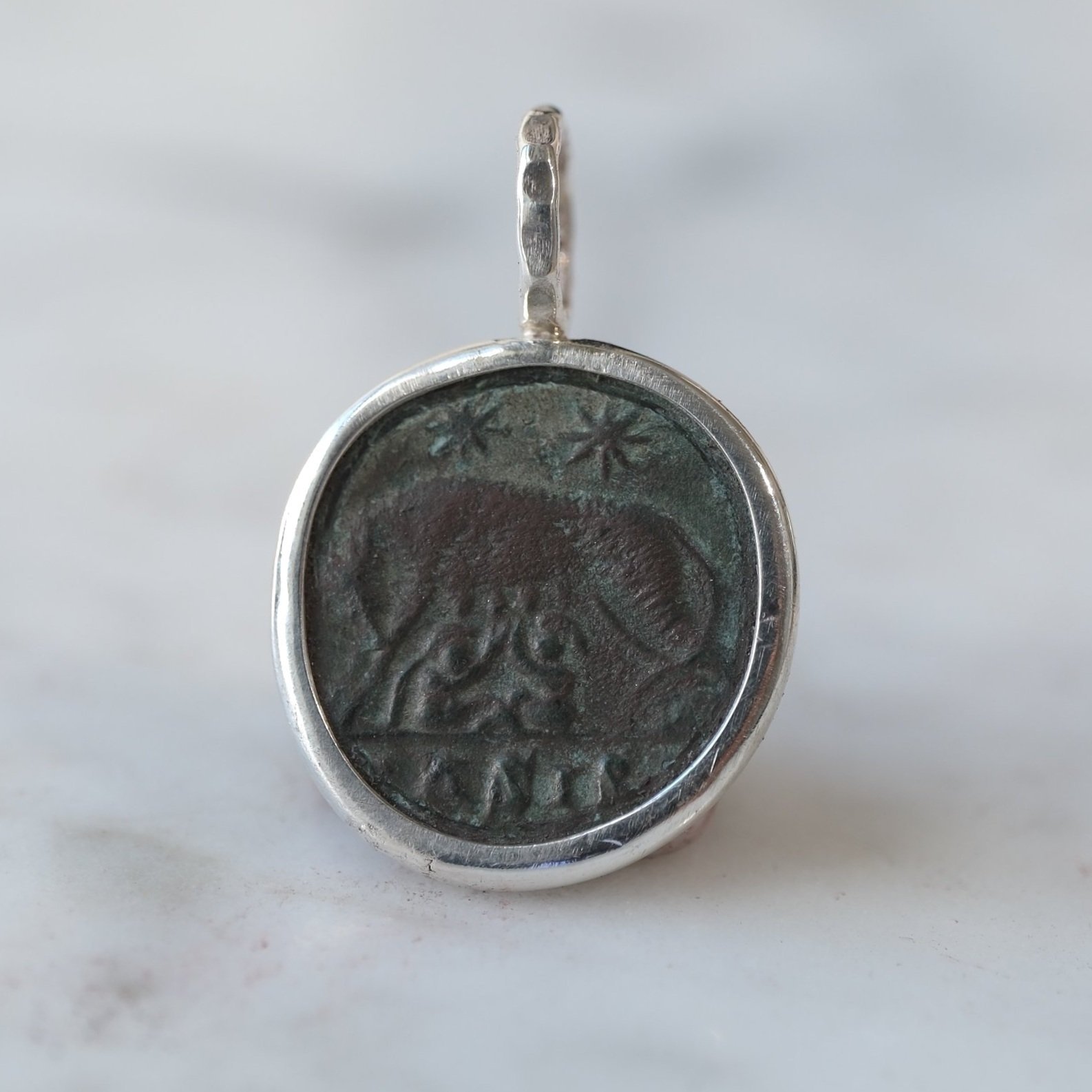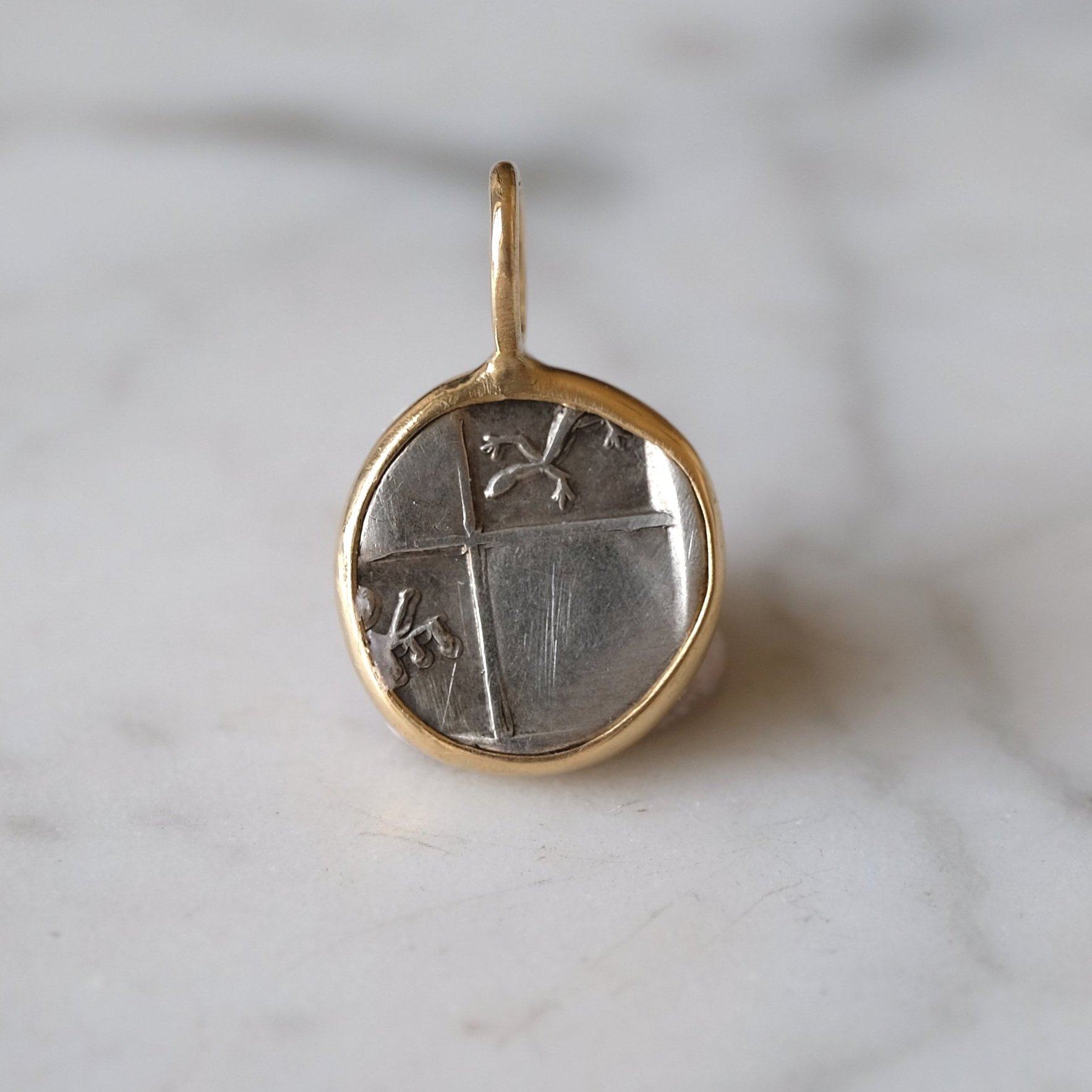 Image 1 of 4
Image 1 of 4

 Image 2 of 4
Image 2 of 4

 Image 3 of 4
Image 3 of 4

 Image 4 of 4
Image 4 of 4





Greco-Baktrian Kingdom - Dioskouroi 150 BC
Authentic Coin - Set in sterling silver. The coin measures about 18.5 mm diameter and weighs 4.2 grams (see picture with a US quarter for scale).
Baktria, Greco-Baktrian Kingdom. Eukratides I Megas - silver drachm
Obverse: diademed and draped bust right
Reverse: the Dioskouroi, holding couched spears and palm fronds, on horses rearing right; monogram to outer left.
Struck circa 170-145 BC. Silver Drachm
By 240 BC, the regions encompassing modern Afghanistan, western Pakistan and northern India had broken from Seleukid rule to become independent under their own line of kings, which were showcased in a series of coin portraits of astonishing power and realism. Greatest of these was Eukratides I, who reigned circa 170-145 BC. His vast realm was larger than any other Greek-ruled kingdom of the time. Indeed he bestowed upon himself the title of Megas (”the Great”), as seen on his coinage. Eukratides struck silver coins in vast numbers and many survive today. This silver drachm depicts Eucratides as a general wearing a broad-brimmed Baktrian helmet, greatly resembling a modern-day British explorer in a pith helmet. The portrait exemplifies the virtuosity achieved by the artisans of this far-flung Greek enclave.
Authentic Coin - Set in sterling silver. The coin measures about 18.5 mm diameter and weighs 4.2 grams (see picture with a US quarter for scale).
Baktria, Greco-Baktrian Kingdom. Eukratides I Megas - silver drachm
Obverse: diademed and draped bust right
Reverse: the Dioskouroi, holding couched spears and palm fronds, on horses rearing right; monogram to outer left.
Struck circa 170-145 BC. Silver Drachm
By 240 BC, the regions encompassing modern Afghanistan, western Pakistan and northern India had broken from Seleukid rule to become independent under their own line of kings, which were showcased in a series of coin portraits of astonishing power and realism. Greatest of these was Eukratides I, who reigned circa 170-145 BC. His vast realm was larger than any other Greek-ruled kingdom of the time. Indeed he bestowed upon himself the title of Megas (”the Great”), as seen on his coinage. Eukratides struck silver coins in vast numbers and many survive today. This silver drachm depicts Eucratides as a general wearing a broad-brimmed Baktrian helmet, greatly resembling a modern-day British explorer in a pith helmet. The portrait exemplifies the virtuosity achieved by the artisans of this far-flung Greek enclave.
Authentic Coin - Set in sterling silver. The coin measures about 18.5 mm diameter and weighs 4.2 grams (see picture with a US quarter for scale).
Baktria, Greco-Baktrian Kingdom. Eukratides I Megas - silver drachm
Obverse: diademed and draped bust right
Reverse: the Dioskouroi, holding couched spears and palm fronds, on horses rearing right; monogram to outer left.
Struck circa 170-145 BC. Silver Drachm
By 240 BC, the regions encompassing modern Afghanistan, western Pakistan and northern India had broken from Seleukid rule to become independent under their own line of kings, which were showcased in a series of coin portraits of astonishing power and realism. Greatest of these was Eukratides I, who reigned circa 170-145 BC. His vast realm was larger than any other Greek-ruled kingdom of the time. Indeed he bestowed upon himself the title of Megas (”the Great”), as seen on his coinage. Eukratides struck silver coins in vast numbers and many survive today. This silver drachm depicts Eucratides as a general wearing a broad-brimmed Baktrian helmet, greatly resembling a modern-day British explorer in a pith helmet. The portrait exemplifies the virtuosity achieved by the artisans of this far-flung Greek enclave.
You Might Also Like





















